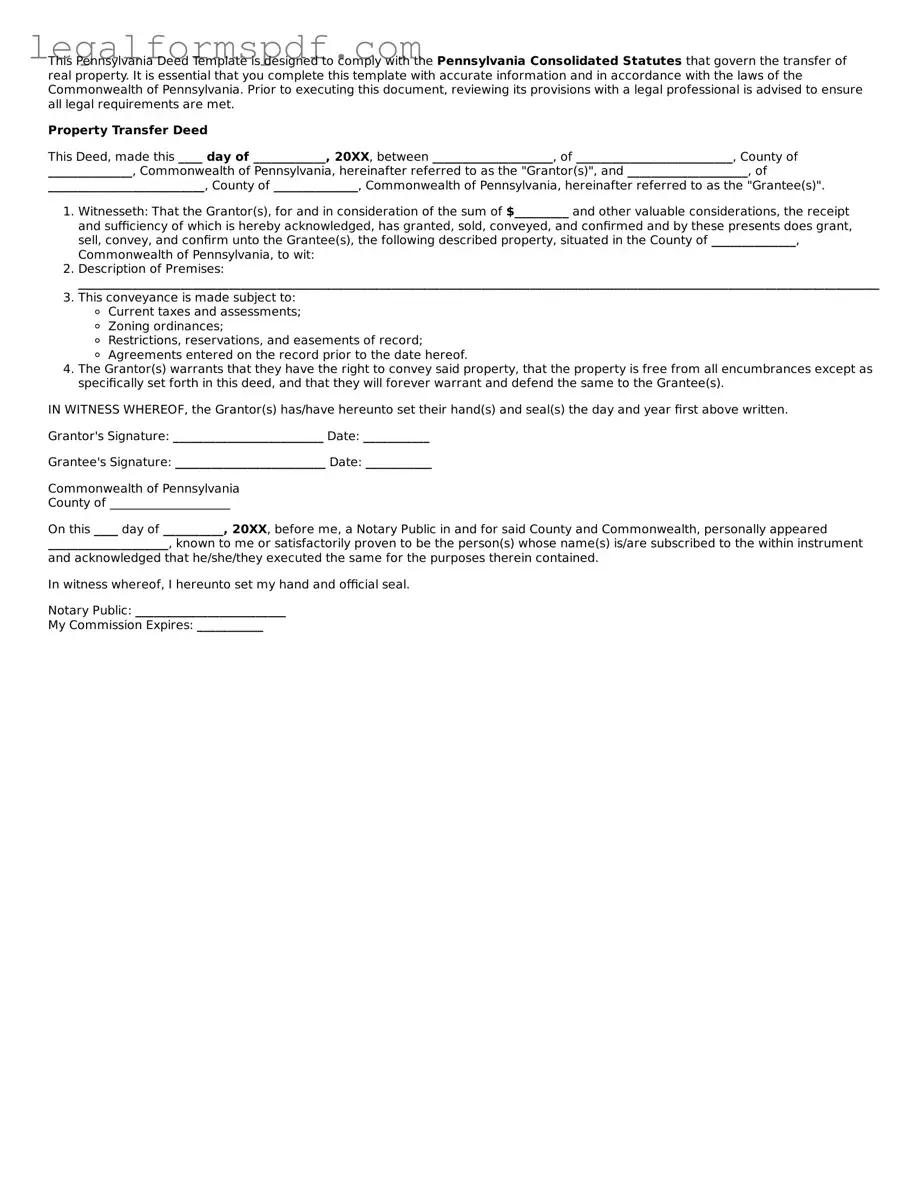What is a Pennsylvania Deed form?
A Pennsylvania Deed form is a legal document used to transfer ownership of real estate in Pennsylvania from one party, known as the grantor, to another, called the grantee. This form contains detailed information about the property and the terms of the transfer.
Who needs to sign the Pennsylvania Deed form?
The person or entity transferring the property, also known as the grantor, must sign the deed. Depending on the type of deed, witnesses and/or a notary public may also need to sign the form to validate the transfer.
What types of Deed forms are available in Pennsylvania?
There are several types of Deed forms used in Pennsylvania, including General Warranty Deeds, Special Warranty Deeds, Quitclaim Deeds, and others. Each type provides different levels of protection and guarantees regarding the property's title.
Is a lawyer required to complete a Deed form in Pennsylvania?
While Pennsylvania law does not require a lawyer to complete a Deed form, consulting with a legal professional can ensure the document is properly executed and addresses all legal concerns, especially given the complexity of real estate transactions.
How do I file a Pennsylvania Deed form?
After the Deed form is completed and signed, it must be filed with the Recorder of Deeds in the county where the property is located. Filing fees will apply, and the amount can vary by county.
Can I use a Pennsylvania Deed form to transfer property to a family member?
Yes, a Pennsylvania Deed form can be used to transfer property to a family member. It's crucial to choose the correct type of deed to ensure the transfer meets your legal and financial expectations.
What happens if a Pennsylvania Deed form is not properly filed?
If a Pennsylvania Deed form is not properly filed with the appropriate county office, it may not be considered legally effective, potentially affecting the property's ownership and causing legal issues down the line.
Are there any penalties for filing a Pennsylvania Deed form late?
While there aren't generally penalties for filing a Deed late, delaying filing can lead to complications, such as disputes over ownership or challenges to the deed's validity.
What information is needed to complete a Pennsylvania Deed form?
To complete a Pennsylvania Deed form, you'll need detailed information about the property, including its legal description, the names and addresses of the grantor and grantee, and the type of deed being used for the transfer.
Can a Pennsylvania Deed form be changed once it's filed?
Once a Pennsylvania Deed form is filed with the county, changes cannot be made to the filed document. To alter the terms of the property transfer or correct errors, a new deed must be prepared and filed.
